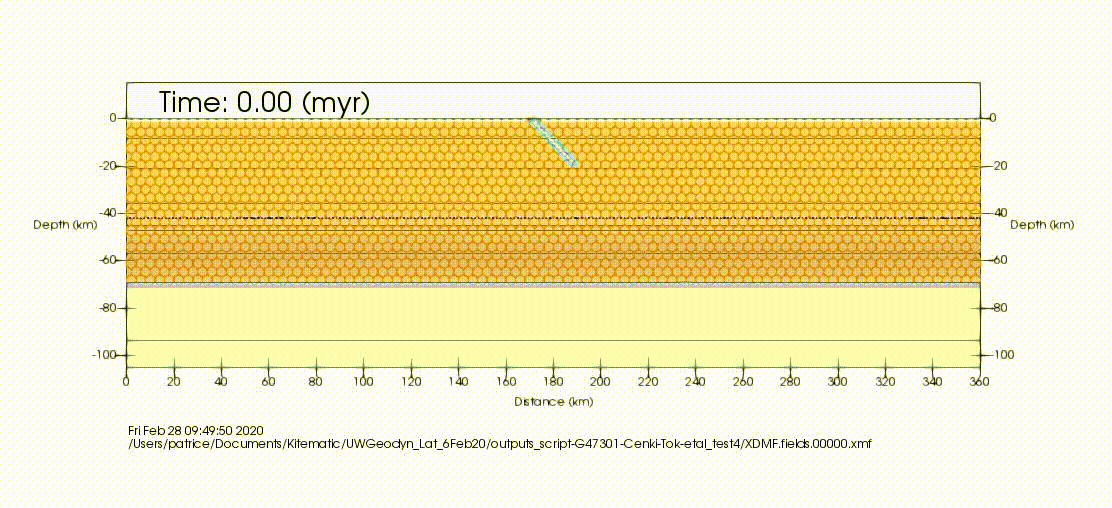Strain and retrogression partitioning explain long-term stability of crustal roots in stable continents
Created by: Bénédicte Cenki-Tok or CenkiPatrice ReyDiane Arcay
- Snapshot
- Science overview
- Software and setup
- Code & data availability
- Metadata
Plain language summary
Away from tectonically active regions, the continental crust has an average thickness of 40 ± 1 km. Yet, it shows a remarkable variability from 25 to 65 km, comparable to that of the most tectonically active regions. Here, we consider the problem of the formation and preservation of anomalous deep crustal roots in stable intracontinental regions. Using two- dimensional thermomechanical experiments, we show that the interplay between partial melting, the formation of garnet-pyroxene-bearing rocks, and their strain rate–dependent retrogression result in the preservation of thick and strong crustal roots. We argue that it is the partitioning into narrow regions of strain, retrogression, and weakening coupled into a positive feedback loop that explains why strong high-grade crustal roots remain largely immune to gravitational stresses and are able to persist over hundreds of millions of years.

Model submitted by Bénédicte Cenki-Tok or Cenki on October 28, 2024.